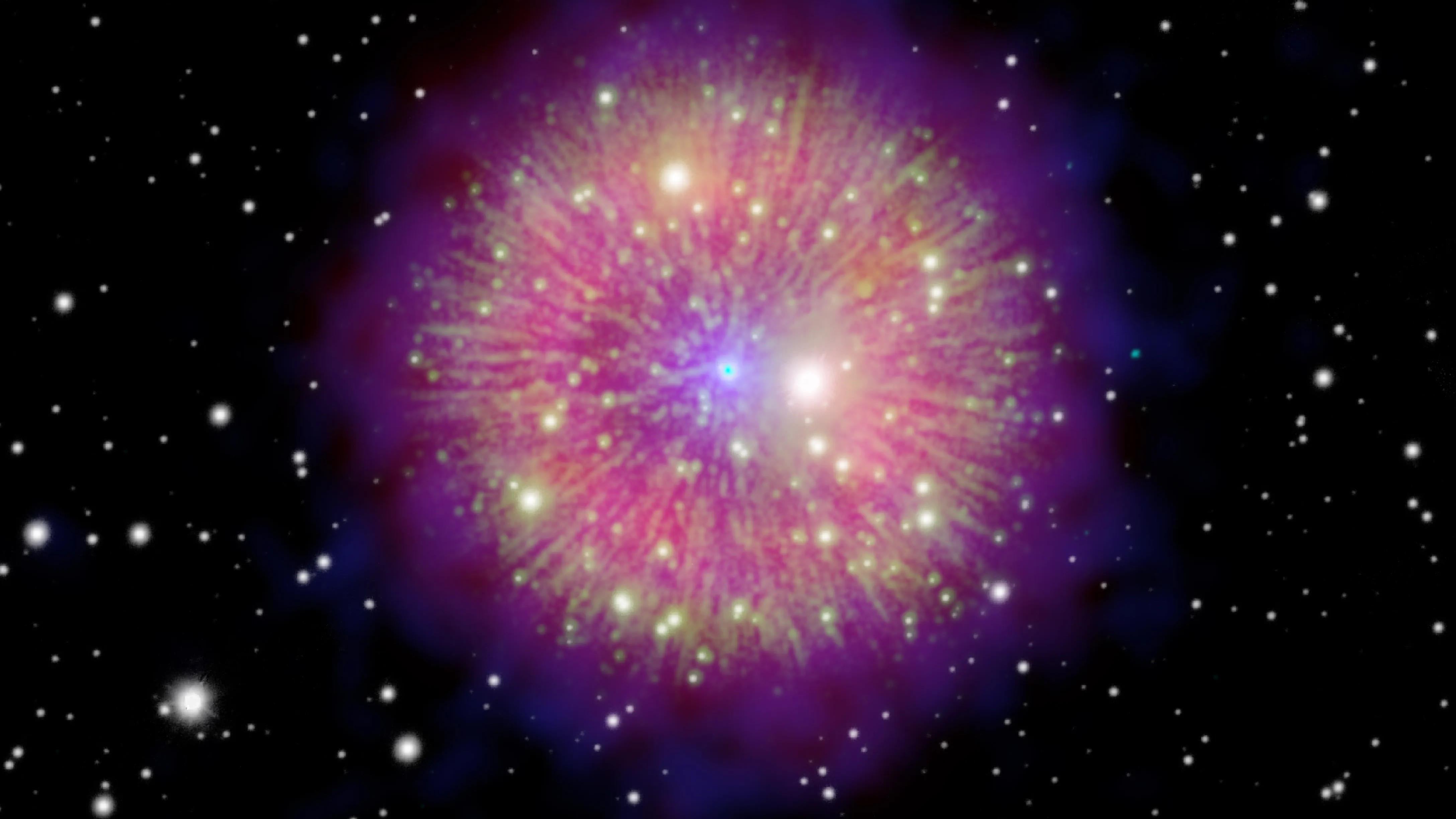The Milky Way’s Most Recent Supernova Was Hidden… Until Now!
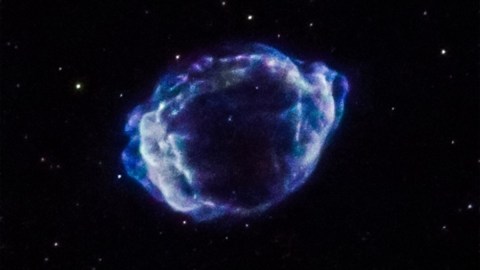
1604 is the last time a human saw one with their naked eyes, but that wasn’t the most recent one at all.
“When a star goes supernova, the explosion emits enough light to overshadow an entire solar system, even a galaxy. Such explosions can set off the creation of new stars. In its own way, it was not unlike being born.”
–Todd Nelson
The brightest, most spectacular explosions in the Universe — supernovae — occur under two very special circumstances. One is when an ultra-massive star some 20, 50 or even 100 or more times the mass of our Sun, runs out of nuclear fuel in its core and reaches the end of its life. The inner core implodes, the outer layers undergo a runaway chain reaction of nuclear fusion, and the majority of the star blows up in a nuclear inferno: a Type II supernova. The other is when a white dwarf (or two merging white dwarfs) reach a large enough overall mass that they collapse, igniting a runaway fusion reaction that destroys the entire star: a Type Ia supernova. Yet despite other galaxies showing supernovae a few times per century, on average, no human on Earth has seen one in our Milky Way since 1604.
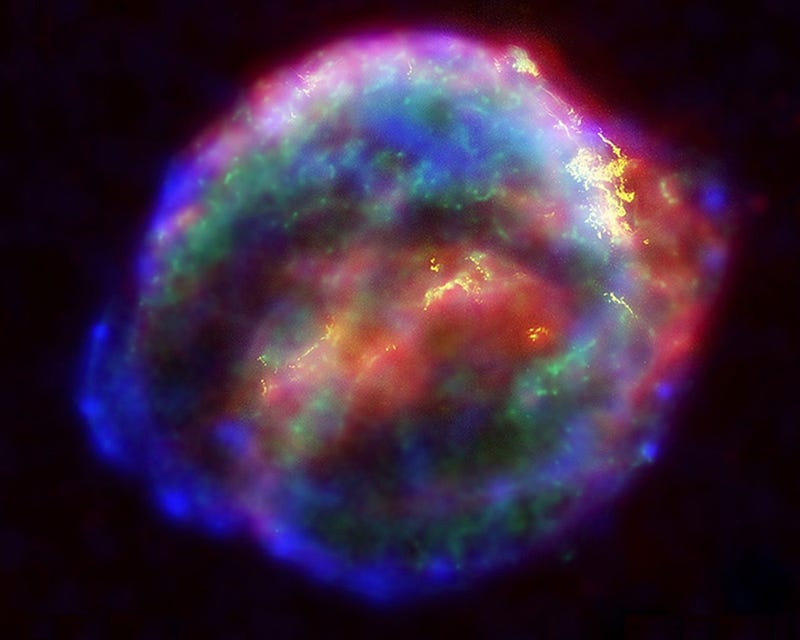
But Kepler’s supernova wasn’t the last one at all, it was only the last one visible to the naked eyes of humanity. Being trapped within our Milky Way might mean we’re closer to any supernovae that happen than in any other galaxy, but it also means we’ve got more light-blocking dust to deal with as we attempt to observe them. Above is a supernova remnant within our own galaxy:Cassiopeia A, which occurred in 1680, but was only discovered centuries later with the development of radio astronomy.
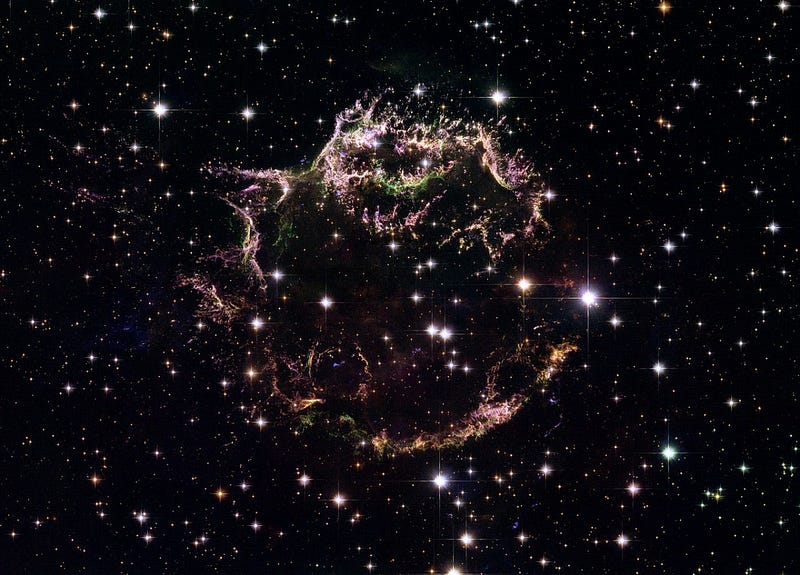
Black holes and neutron stars, the remnants of Type II supernovae, emit so strongly in the radio that Cassiopeia A is the strongest radio source as seen from Earth beyond our own Solar System. Despite the fact that it was invisible from Earth, Cassiopeia A is only 9,000 light years away: firmly in our neighborhood of the 100,000 light year diameter Milky Way. Yet below, towards the galactic center, an even newer supernova remnant was discovered in 1984/5.
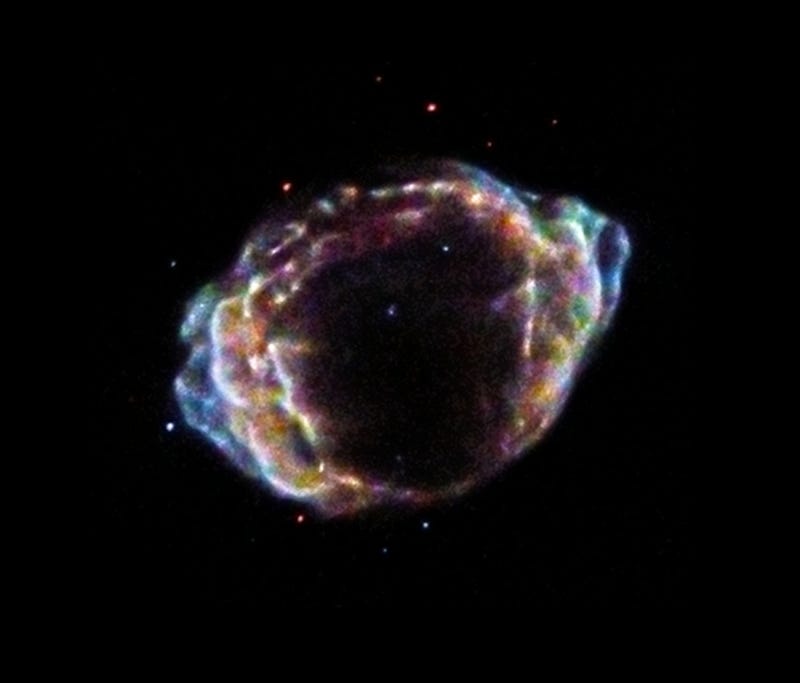
Close to the galactic center, the supernova remnant G1.9+0.3 was first discovered in the radio thanks to the Very Large Array (VLA), with its origin unknown. The fact that it was so small on the sky, despite being at a distance of 25,000 light years, brought up the possibility that this was a very young supernova: perhaps the youngest of all supernovae in the Milky Way. Follow-up observations took place in the 2000s with the Two-Micron All-Sky Survey in the infrared and with the Chandra X-ray observatory, where a wonderful surprise came to light: this supernova remnant was expanding at an incredible pace!
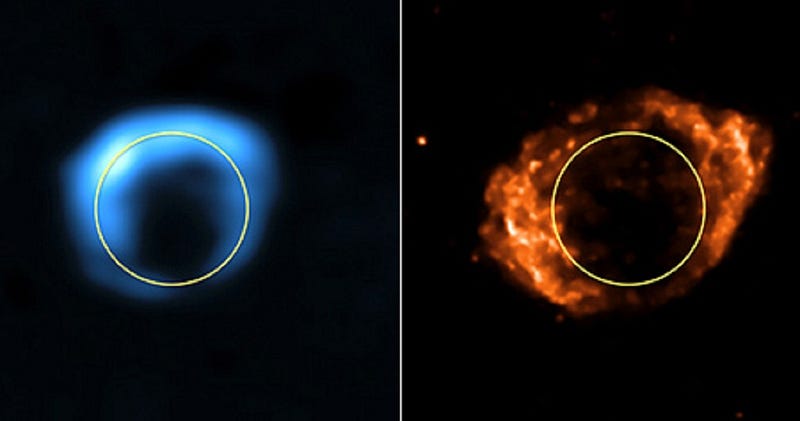
This allowed us to date it: it was somewhere between 100 and 200 years old, and no older, making it the youngest supernova known in the Milky Way. It also taught us what type it was: Type Ia, originating from a white dwarf. The Chandra X-ray observatory and the VLA have both continued to return to this object in the hopes of learning more, including the possibility of learning about its origin. The surrounding gas and dust offered a tremendous clue: the brightness in both the radio and the X-ray has increased over time, something that should only happen if the supernova came from the merger of two white dwarfs, rather than a single white dwarf accruing matter from a companion. According to Francesca Childs, an author on the study that came out earlier this month revealing this discovery,
“We observed that the X-ray and radio brightness increased with time, so the data point strongly to a collision between two white dwarfs as being the trigger for the supernova explosion in G1.9+0.3.”
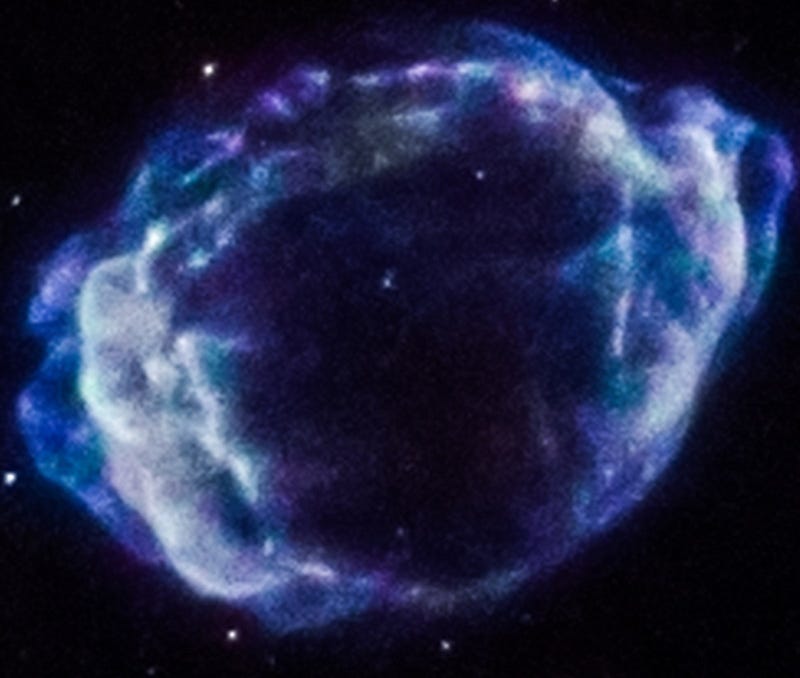
Already, this supernova remnant is nearly 10 light years in diameter, which means the supernova’s blast wave is propagating outwards at a few percent the speed of light! Additional results from the study allow us to conclude that the age of this supernova is closer to the low end of the age spectrum: probably around 110 years old, meaning that the light would have first reached us right when Einstein’s special theory of relativity was rocking the scientific world. It was thought, for a long time, that a single accreting white dwarf was the standard model for how these Type Ia supernovae occurred, but we know for certain, with the further data on this event, that that can’t be how they all happen. Perhaps, even, it’s possible that most or all of the Type Ia supernovae form from white dwarf mergers. Time, more data, and (hopefully) additional supernovae in our own neighborhood will help us find the answer to this mystery once and for all!
This post first appeared at Forbes. Leave your comments on our forum, check out our first book: Beyond The Galaxy, and support our Patreon campaign!



